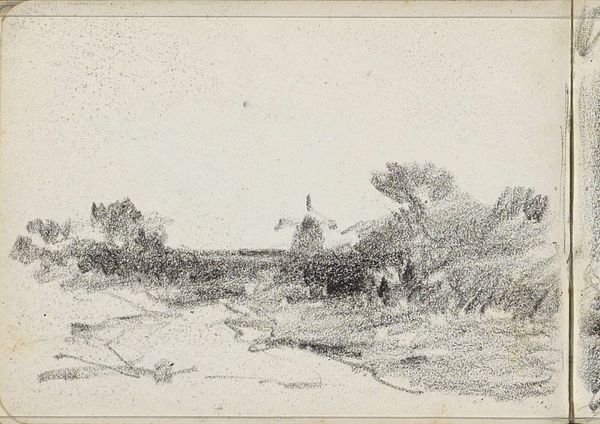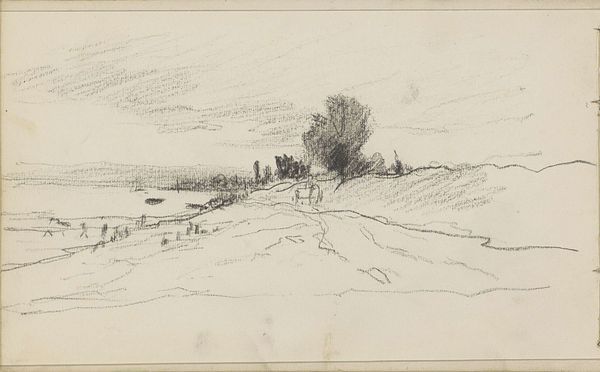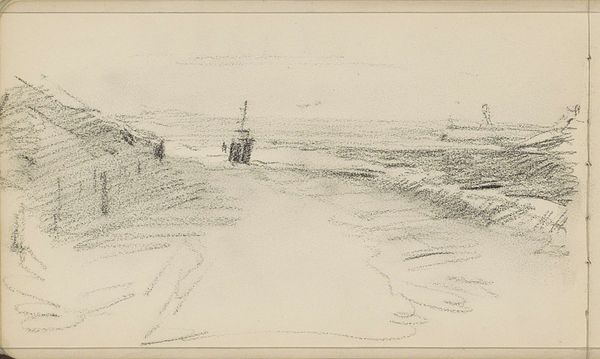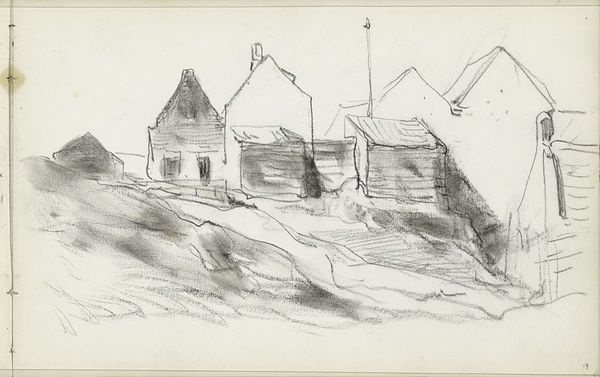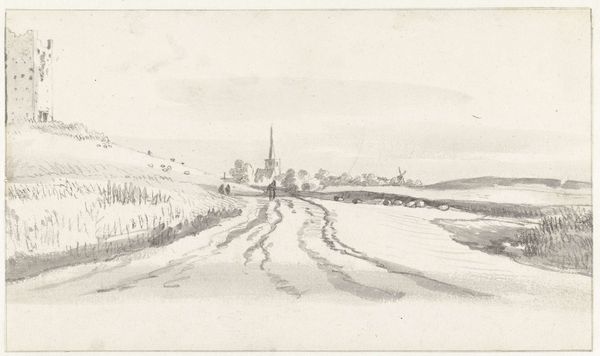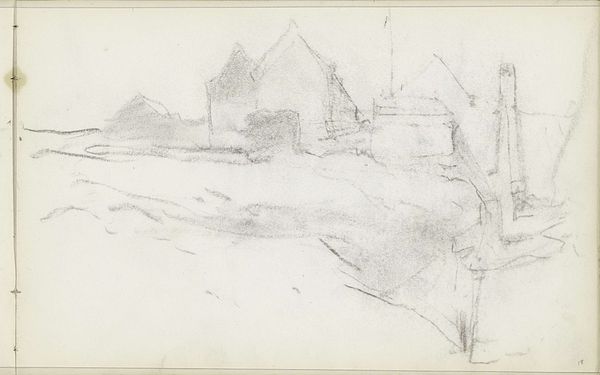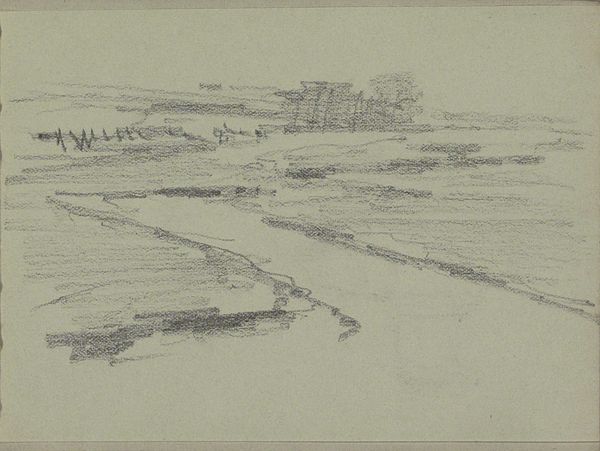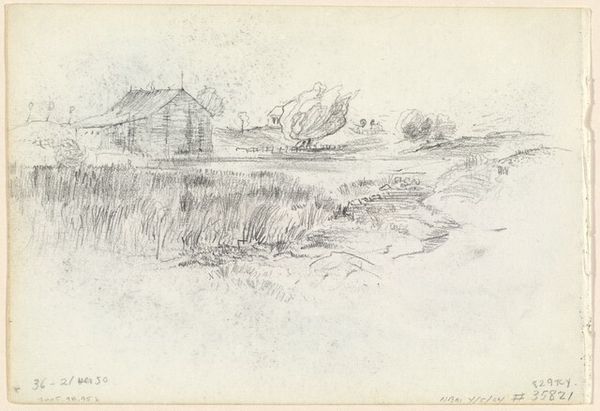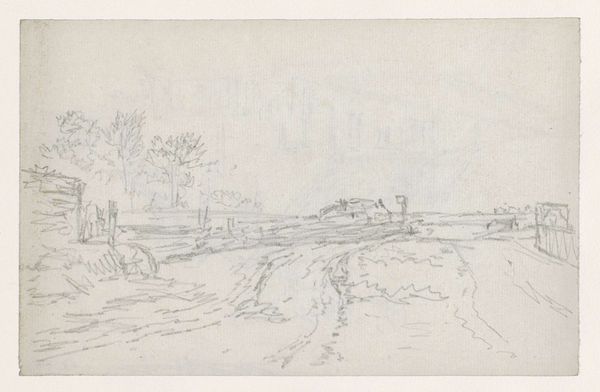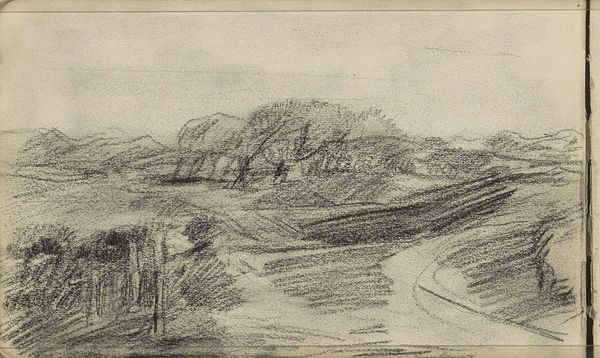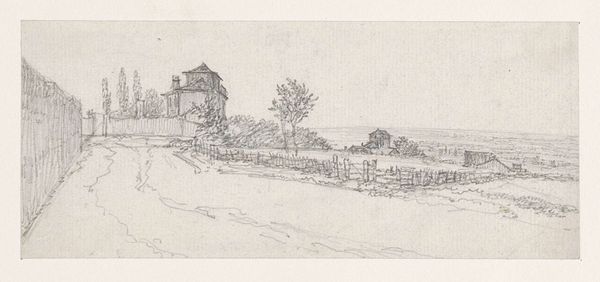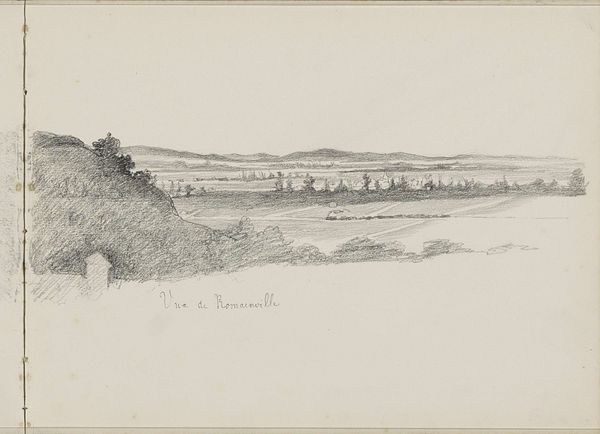
drawing, pencil
#
drawing
#
pencil sketch
#
landscape
#
form
#
pencil
#
line
#
realism
Copyright: Rijks Museum: Open Domain
Curator: Standing before us is "Landschap met bebouwing," or "Landscape with Buildings," a pencil drawing by Johan Antonie de Jonge, likely created sometime between 1901 and 1927. Editor: There’s a quiet stillness about it, almost melancholy. The sparse pencil lines give it this ethereal quality, like a memory fading at the edges. Curator: Precisely. De Jonge's work really embodies a certain realism through its emphasis on form and line, a real dedication to representing what he saw. You can feel the openness of the Dutch landscape, almost tangible in its simplicity. But how does this translate regarding his tools? Editor: Look at the strokes: they are economical, revealing the tooth of the paper, each mark considered and essential. It tells you about the availability, or maybe the scarcity, of the materials. This piece could have been produced rapidly during the industrialization of art materials, and reflects increased affordability. Curator: That makes me consider that this drawing carries the weight of those observations—a life lived close to the land. I like that it also contains the artist, in the very trace of the process. Do you think that de Jonge found solace in the simple act of drawing what was right in front of him, of building from the available supplies? Editor: Possibly. A simple act becomes imbued with quiet resistance if we situate the drawing within its political economy. What is highlighted for me is this question of who is in possession of such everyday things. We all consume these landscapes; we should remember their producers. Curator: Absolutely. The sketch is also infused with a sense of ephemerality. It's as though we're catching a fleeting glimpse of a scene before it dissolves back into mist, or the collective cultural mind. That’s also thanks to his expert depiction of building methods within the time he lived. Editor: So well captured! A sketch is nothing more than a temporary mark; but with the benefit of the current setting we stand within, there is almost an immortality to this quiet study of both land and the methods of its material inscription. Curator: Ultimately, viewing it from any vantage point can deepen our interaction and increase its presence with each engagement. Editor: To look closer is to enrich the ground where materiality and spirit come together.
Comments
No comments
Be the first to comment and join the conversation on the ultimate creative platform.
